 |
|||||
|
|||||
| Preview of Stamps Catalogue: VOLUME 1 |
 |
|||||
|
|||||
| Preview of Stamps Catalogue: VOLUME 1 |
Terre-Neuve - Neufundland
Return To Catalogue - Newfoundland (Canada) 1857-1865, pence issues - Newfoundland 1866-1896, cents issues, part 1 - Newfoundland 1897-1920 - Canada - Forgeries of the first issue - Forgeries of the second issue, 2 p, 4 p, 6 p - Forgeries of the second issue, 6 1/2 p, 8 p, 1 Sh - Postal stationery and Fiscal stamps
Note: on my website many of the
pictures can not be seen! They are of course present in the catalogue;
contact me if you want to purchase it.
Newfoundland (Canada) 1866-1896, cents issues, part 1
10 c black
Value of the stamps |
|||
vc = very common c = common * = not so common ** = uncommon |
*** = very uncommon R = rare RR = very rare RRR = extremely rare |
||
| Value | Unused | Used | Remarks |
| 10 c | *** | *** | |
Forgeries, (all of them rather poor lithographs), examples:
The above forgery is a Spiro forgery (I presume). It is lithographed instead of engraved, perforated 13 (instead of 12). It has guidelines around the stamp. Note the strange "909" numeral cancel.
Another crude forgery (note the strange shape of the "C" of "CENTS" for example:
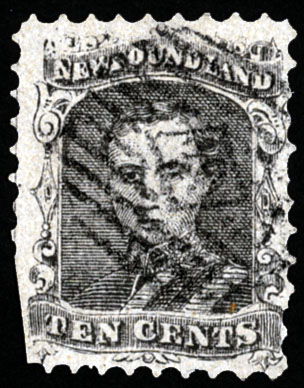

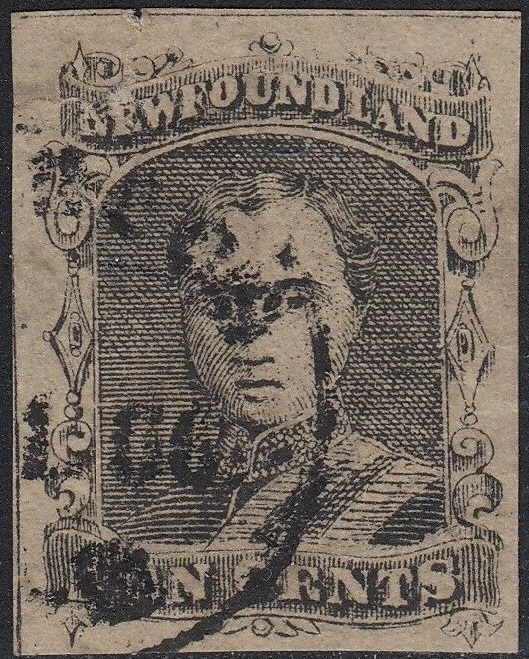


Crude forgery, note the strange "C" in
"CENTS". Note the "CORREOS
7.1.60. II-III" forged cancel. Also a "1602"
cancel as can be found on the ship design forgeries.

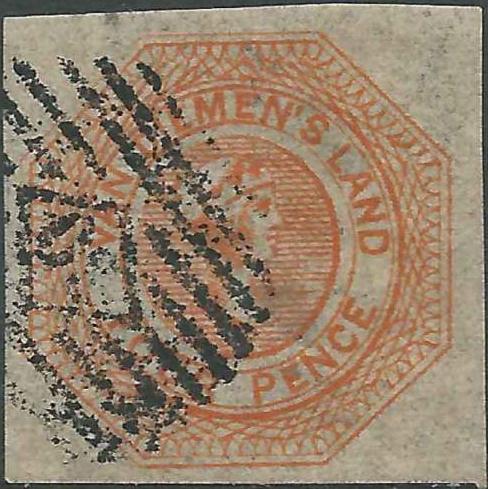
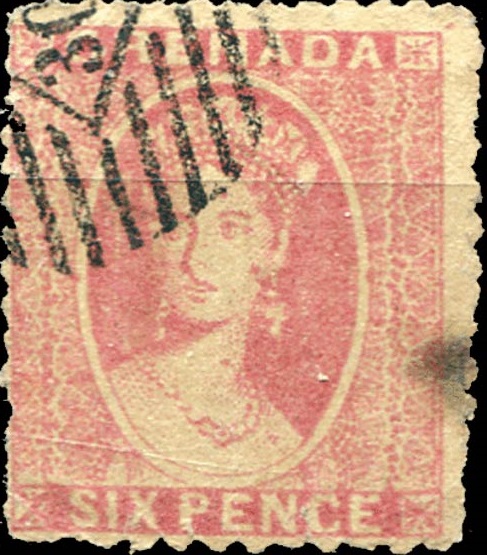
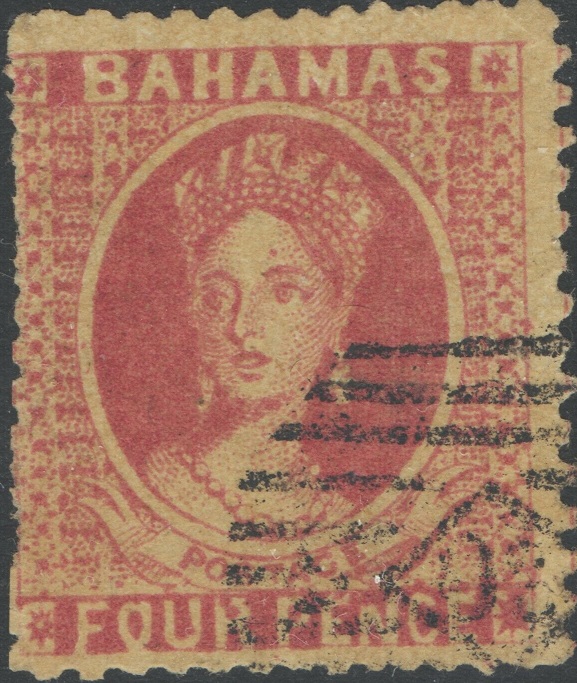
The forged numeral cancel "30" in a lozenge with lines
around it was also used for a forgery from Tasmania and one from
Grenada.


Yet another forgery. This forgery type is quite deceptive, it
also exists in blue color.
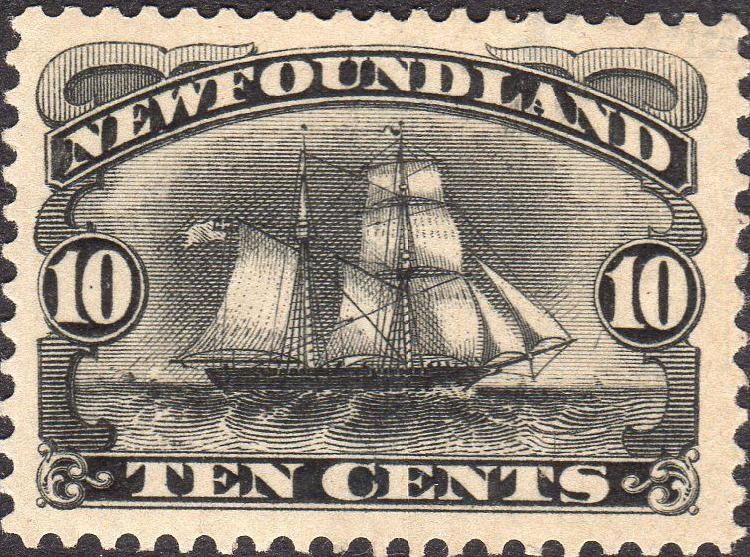



10 c: black schooner. 13 c: Schooner Goodall.
10 c black (1887) 13 c orange (Schooner, 1866)
Value of the stamps |
|||
vc = very common c = common * = not so common ** = uncommon |
*** = very uncommon R = rare RR = very rare RRR = extremely rare |
||
| Value | Unused | Used | Remarks |
| 10 c | *** | *** | |
| 13 c | *** | *** | |
Spiro Forgery:
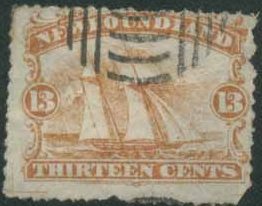
The clouds are very heavyly done. Above the letters "UN" of "NEWFOUNDLAND" there should be some dots, which are absent in the above forgery. This is the forgery described in Album Weeds. It is lithographed, instead of engraved for the genuine stamps. There are corner guidelines in these forgeries. The flag behind the ship is larger and more wavy. Of course, the cancel is bogus as with many of the Spiro products.
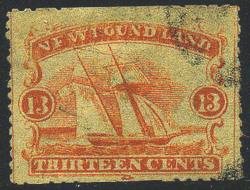

The above forgery has the word "NEWFOUNDLAND" quite different, the letters don't touch each other. The "13"s are also different. There are guidelines all around the design. The second mast points to the front of the "W" of "NEWFOUNDLAND", in the genuine stamps it points to the middle of this letter. The flag behind the ship is smaller than in the genuine stamps. The cancels that can be found on this forgery are quartered corks or four concentric rings. I've been told that this forgery is made by Fournier, however, I can't find it in his 1914 pricelist.

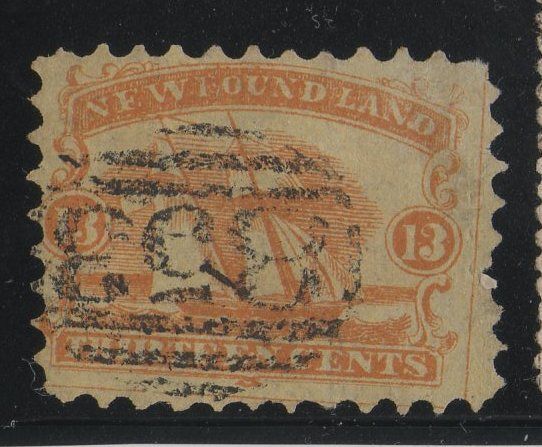

Several forgeries of the 13 c value, note the very wide
perforations on some of the stamps. Note the bogus numeral
"1602" and "853" cancels.


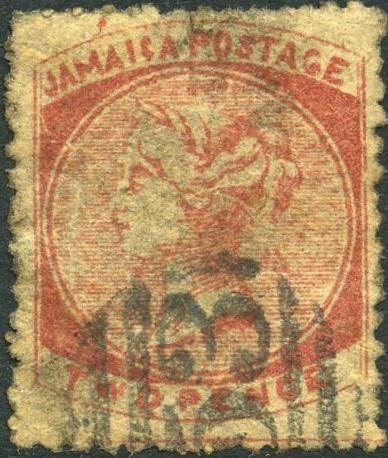

The same "853" forged cancel was also used on forgeries
from Jamaica and Mauritius.

Forgery with large space between "NEW" and
"FOUNDLAND". I've only seen on copy of this forgery.



This appears to be a Moens print. It has printed perforation. It
also exists in different colours with the 'perforation' cut off.
A similar image appears in the catalogue of Placido
Ramon de Torres "Album Illustrado para Sellos de
Correo" of 1879 (information passed to me thanks to Gerhard
Lang, 2016) on page 227 (third image shown above).
3 c red (1870) 3 c blue (1873) 3 c blue (other design) (1880) 3 c brown (1887) 3 c black (small head of the Queen, 1890) 6 c red (1870, 2 shades of red exist) 12 c brown (1866) 24 c blue (1866) Surcharged on 3 c black (with colour changed)

'ONE CENT' on 3 c blue (3 types 1897)
The 3 c blue (1873 issue) exists rouletted.
Value of the stamps |
|||
vc = very common c = common * = not so common ** = uncommon |
*** = very uncommon R = rare RR = very rare RRR = extremely rare |
||
| Value | Unused | Used | Remarks |
| 3 c red | *** | *** | |
| 3 c blue | *** | ** | |
| 3 c blue | ** | * | 1880 type |
| 3 c brown | ** | * | |
| 3 c black | * | c | |
| 6 c | * | * | |
| 12 c | ** | ** | New shade of colour was issued in 1894(?) |
| 24 c | ** | ** | |
| Surcharged | |||
| 1 c on 3 c | ** | ** | Cheapest type, other 2 types: *** and RR Forged overprints exist. |
I have seen a 'postcard' in the 3 c design, but in the value 2 c red.
Forgeries, example:
In the 12 c brown the "." after "NEWFOUNDLAND" should touch the shading of the "D" in the genuine stamps. Also the buckle doesn't go into the shaded center in the genuine stamps. Also note the poor expression on the face of the Queen. The outer line of this forgery is double from above the last "N" of "NEWFOUNDLAND" to above the end of the "W" of "TWELVE'. This is the second forgery described in Album Weeds. The Queen has a rather sad facial expression.
Spiro forgeries:
The cancels will condemn these forgeries immediatly; an oval formed by 4 parallel straight lines at top and bottom and 5 curves lines at each side.

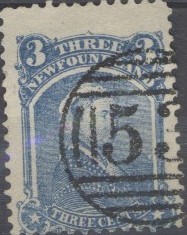

Are these the same Spiro forgeries as shown above, but with
different cancels and larger margins? One with a numeral "53" cancel.
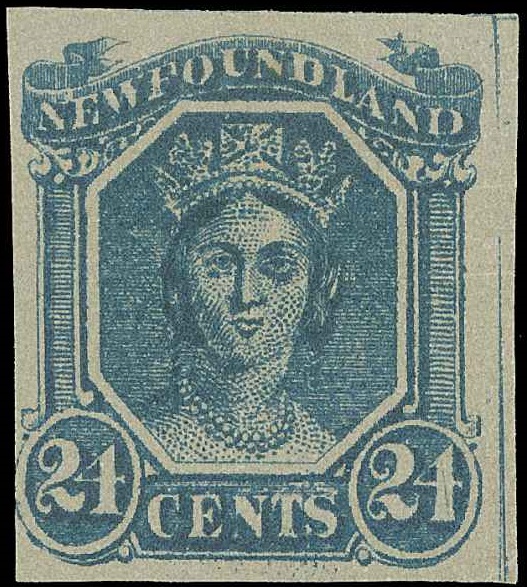


Other forgery of the 24 c value, the left "4' is different
from a genuine stamp and also too small when compared to the
"2" next to it. These also exist printed from a worn
plate.
For issues of Newfoundland from 1897 to 1920 click here.
More reading material: "Newfoundland Fakes and Forgeries" by Ed.Wener.
Examples:

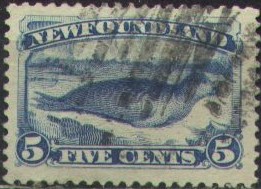



Typical cork cancels, line and circle cancels and pen cancels as
they can be found on stamps of Newfoundland.
A numeral cancel "235" was used in St.John's (see BNA Topics, Vol.58, No.2). It appears to be the only numeral cancel to have been used in Newfoundland and was presumably introduced in 1873. The statement in BNA Topics that this might have been an English Staindrop canceller, also with the number "235" appears incorrect, since the number of bars on both cancels is not the same (see https://www.stampboards.com/viewtopic.php?f=10&t=10352). However, there also appears to have been a "A92" Cunard ship cancel used on stamps of Newfoundland, but I've never seen it.
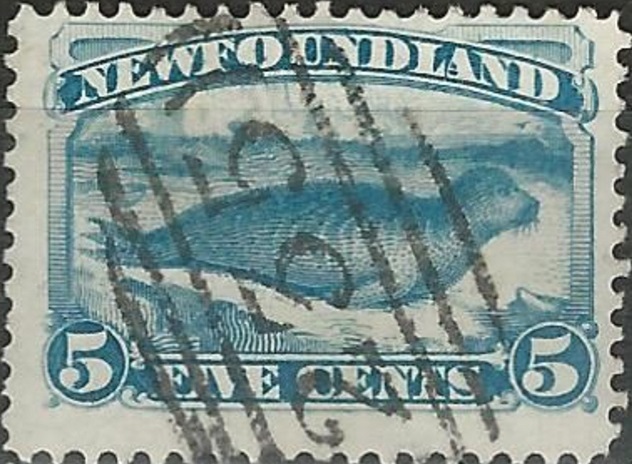
Numeral "235" cancel of St.John's